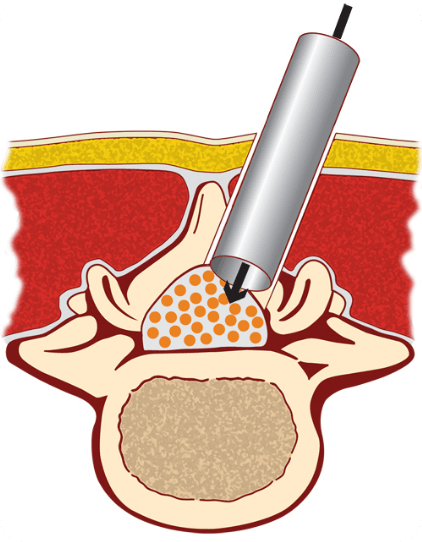Stenosis
What is spinal stenosis?
Spinal stenosis is defined by an overly narrow space and an exertion of pressure around the spinal cord, resulting in irritation. In 2020-21, 12% of total back problem hospitalisations were a result of spinal stenosis.
Symptoms
Symptoms may not be evident in the initial stages of spinal stenosis. However, symptoms typically develop over time and may include numbness, tingling or weakness in the neck, back arms, legs, hands or feet.
Two primary areas are affected, these being:
Lower back (lumbar spinal stenosis)
The lumbar spine is connected between the upper spine and pelvis, consisting of five vertebrae known as L1 to L5. These are the largest in the spine.
Neck (cervical spinal stenosis)
The cervical spine is connected between the upper spine and head, consisting of seven vertebrae known as C1 to C7. These are the most mobile joints in the spine.

In rare cases, the middle back (thoracic spine) can be affected by stenosis.
Causes
Spinal stenosis can be caused by various factors that are attributed to spinal canal constriction. The vertebral canal typically offers sufficient room for the spinal cord, cauda equina, and exiting nerves, however, the following factors can cause this space to narrow:
The structural integrity of the spine can deform over a period of time. Due to ageing, ligaments have the potential to thicken and harden due to calcification. Additionally, bones and joints may experience enlargement. For example, bone spurs (projections of the bone out from the body) decrease the space around the spinal cord and nerve roots. More complications include:
- A herniated (bulging) disk can dry out and crack as it ages, causing it to bulge.
- Excessive spine mobility causes capsules (membranes) surrounding the facet joints located at the posterior aspect of the vertebrae undergo thickening. Bone spurs can be developed as a result of natural stabilisation efforts.
- Spondylolisthesis, a condition where a vertebral body slips forward relative to another, can exert pressure on the spinal cord or nerve roots due to the compromised mechanical alignment.
Two common forms of arthritis than can cause spinal stenosis are osteoarthritis and rheumatoid arthritis. Osteoarthritis occurs as a result of degraded joint tissue, often associated with ageing. This may lead to spinal stenosis due to the narrowing of the central and nerve root canals from disk degeneration or bone enlargement. Rheumatoid Arthritis is an autoimmune disorder where inflammatory disease can damage the joints, potentially resulting in spinal stenosis.
Soft tissue growths that can narrow the space.
Protrusions of bone as a result of a fracture can potentially penetrate the canal, or spine misalignment can occur.
This chronic disorder can disrupt the natural remodelling process of bones, impacting the spaces within the spinal canal.
A condition where calcium deposits harden the ligament (band of fibres) that run along the vertebral body and inside the spinal canal. As a result of this, the fibrous tissues can form into bone, pressing on the nerves of the spinal canal.
Some inherited conditions that impact bone formation, such as a small or narrow spinal canal, scoliosis or achondroplasia, can impact spinal pressure, leading to stenosis.

Approach to endoscopic decompression surgery.
Make an appointment
Your well-being is our priority, and we invite you to experience the transformative impact of advanced spinal care.